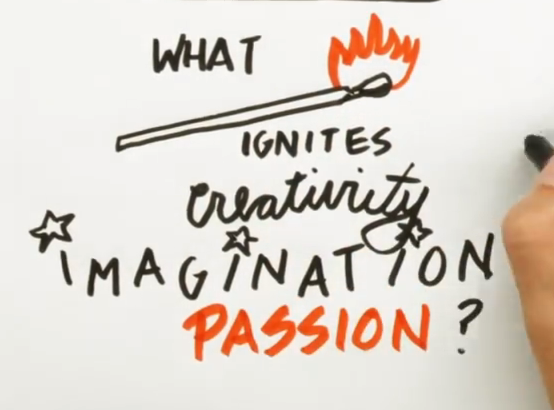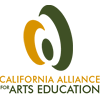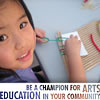The Making of the Animated Video: Interview with Nevada Lane
The first installment of our Student Voices Visionary features Nevada Lane, whose drawing are featured in the animated Student Voices Intro video. We spoke to her by phone and asked about her vision for schools, what creativity means to her, and what it was like to draw with a camera recording her every move!
 What is creativity? Can you give an example of creativity in someone you know? (It could be a friend, a relative, a public figure, or you)
What is creativity? Can you give an example of creativity in someone you know? (It could be a friend, a relative, a public figure, or you)Nevada: I’m going to take a different slant on it. We often think of creativity in the arts, and I think that’s beautiful and wonderful. But what’s under recognized is the creativity people have when working with other people and how they’re able to create something out of bringing people together around collaborating and achieving a common outcome.
For a practical example – young activists who can create networks of people and bring people together to have a conversation about and tackle issues like climate change, or gun control laws. It’s a beautiful form of creativity that we don’t often think about.
How did you get your start as an artist? Did you have arts in school?
I did have arts in school. I went to a type of school called a Waldorf school, and I was there for nine years from K-8 in the US system, and the arts were woven into every discipline, so for example when you’re studying history you’re drawing pictures of historical events, you’re using watercolor or you’re sketching. So I never really thought of art as separate from everything else, I always saw it as part of how you learn. And to be honest I still think of it as a practical skill for learning, versus something I do on the side. So it’s really woven into how I work now, because I’m a facilitator as well as an artist, so I use visuals to help groups see the future I help them draw themselves a picture of the future.
When did you realize that that’s how you saw yourself in relation to the arts?
I suppose I always knew I could draw something, because when you grow up doing it and everyone in your class is doing it, it seems pretty regular. But in high school I saw that fewer people could do it so I thought I’m ok at this. But it wasn’t until my twenties that I realized I could combine my business sense and my visual sense to create a new offering. I didn’t realize it was special or unique until my twenties probably.
What’s your vision for how schools can inspire and engage students? (What should they do
more of? What should they do less of? What are the most exciting things happening in schools?)
I have two kids in elementary school, so just thinking about that, to me when I see what engages my kids, it’s hands on learning, and the ability to do hands on learning connected to some curriculum concept do a project related to that and take it as far as they want to go with it, so to be challenged at the level that they’re at.
What was the process for drawing the student voices campaign video?
It was fun! We had a great script to work with that was created by Joe Landon and my partner Norman, and then we went through the process of thinking about what the characters would look like pretty early on. Because we wanted these kids to look like, you know, teenagers in California. We want them to represent the whole spectrum, I mean we’re a melting pot, and the characters should reflect that. So we thought about that and played with different images, and asked ourselves, are they too young? Are they too old? Did they look middle aged did they look like elementary school kids? So we spent some time on that. But once we had that nailed down it was pretty organic in terms of then creating the story board to align with the script, so character development, then storyboarding, then Joe had some really good feedback about the visuals for certain words to make them really align with what the Alliance was trying to say. We went through a revision process, where we got the storyboard approved and when we started drawing – it’s kind of a crazy process, because you can’t make and mistakes along the way. We had this huge piece of paper with a camera overhead and we’re drawing and working from the story board, but you can’t make any mistakes because then you’d have to start from the beginning again. So we’re working on one piece of paper! So that was a bit stressful, but also fun.
Why should other people join this campaign?
Oh I think it’s a great chance for kids to reach out to their representatives and let them know what they want in their school, that the arts can be a crucial factor in them being engaged in Common Core. If people want Common Core to be successful, arts is a great way to make that happen. And encouraging kids to express themselves and get involved in the political process. I think both of those are really important.
What advice do you have for students who want to pursue a career in the arts?
Figure out which part of the arts is your passion, and be determined. Be determined and have faith in your style and your approach and what you have to bring to the table. And know that it’s going to evolve over time, so how you work now is probably not how you’re going to work in five years, or if you’re a painter, what your favorite topics are now is probably not what it’s going to be in five years. There’s going to be an evolution in your work as you mature. Just be persistent – there are ways to make money. You do not have to be a starving artist.
Was there anything else you wanted to add?
The challenge that I think California faces is that people see art as a separate subject. So my kids see art as this thing you do during art class, and to me what we’re all really striving for is what I got to experience in school – art is a way of interacting with subjects that brings them alive for people, and it really should be interwoven, in my mind, in every subject. In terms of acting out plays in English, or dancing related to poetry, or illustrating historical concepts. That to me is a way of making the learning really come alive through the arts.
Nevada Lane is the founder and principal consultant at Lane Change. Over the past 15 years she has lived and worked in the U.S., Germany, the United Kingdom and Sweden helping teams learn, grow and communicate more effectively using the power of collaborative dialogue and visual thinking. Nevada holds a B.A. from UC Berkeley and the LMU in Munich, Germany, and a M.S. from USF in Organization Development. She is certified to administer the Myers-Briggs Type Indicator (MBTI), the EQi 2.0 Emotional Intelligence coaching tool, and the Drexler-Sibbet Team Performance Indicator. She lives with her husband and two children in her native San Francisco.
Astghik Hairapetian conducted the interview for the California Alliance. She is a former intern for WriteGirl, a current program assistant at the UBC Centre for Community Engaged Learning, a future B.A. in International Relations and Spanish from the University of British Columbia, and most importantly, an eternal lover of the arts.










